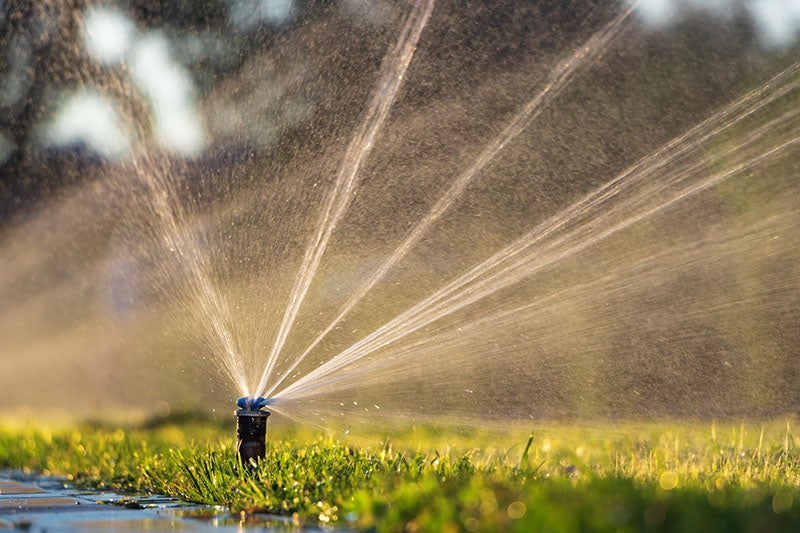
In most respects, the quality of the water you drink is determined by the source of the water and the treatment it receives. However, did you know that you may also play a role in preserving the quality of our water? If you have an in-ground irrigation system or pool, your role may be more important than you think!
The reason involves “backflow.” Contamination by backflow can occur when conditions cause water to reverse its normal direction of flow, causing tainted water to draw back into the household plumbing or the public water distribution system. This can happen when a hose is left in a pool, pond, or cleaning bucket. And although serious backflow incidents are not common, they can and have occurred. In-ground irrigation systems are the most widespread potential sources of backflow, though plumbing systems associated with pool equipment, solar panels, fire sprinkler systems, and auxiliary water supplies such as wells can also be culprits, and are required to have backflow protection.
So, how can you protect yourself and your neighbors from a potential backflow hazard from your irrigation system?
Protection from potential backflow contamination is an important safeguard for water quality, and all water utilities in Oregon are required to operate backflow prevention programs. This includes assurance that certain backflow prevention devices are tested each year.
1
Make sure your irrigation system is equipped with backflow prevention device(s) as required under state health codes.
There are several types, which may be used in conjunction with irrigation systems, which include atmospheric vacuum breakers (AVBs), pressure vacuum breakers (PVBs), double check valve assemblies (DCVAs), and reduced pressure backflow assemblies (RPBAs).
2
Understand the installation requirements for your device to assure it will function properly.
Each type is subject to certain installation requirements, and some devices will not work in all circumstances. For example, some types must be located six inches to a foot higher than any sprinkler, which may be difficult to accomplish on a sloped site. A brochure linked below explains installation requirements; see also our Backflow Prevention Device Standards linked below. Make sure you obtain a plumbing permit to receive an inspection of your installation.
3
Have your backflow prevention device tested.
Under state health regulations these devices (except AVBs) are to be tested after installation and each year thereafter. A link to the State of Oregon’s list of certified testers is at the bottom of this page.
Medford Water has long played an active role in verifying the proper installation and testing of backflow devices, particularly for high hazard applications. Several years ago, we determined that it was easier and more effective—both for customers and our utility—for us to undertake this task on behalf of its single-family residential customers. A small monthly charge on your monthly residential water bill provides the funding for this important program, which benefits those single-family residences with backflow prevention devices, as well as providing assurance to nearby properties that their neighbor’s backflow device(s) are providing the intended protection.
You don’t need to wait for us to call on you.
If you have an irrigation system, and haven’t included testing and upkeep of your backflow device as part of your yard maintenance tasks, we encourage you to do so. Remember, the people most likely to be endangered by a backflow situation at your house are those closest to it, which includes your family and neighbors. Working together, we can prevent this type of contamination from occurring. We are continuously expanding this program to assure that all such devices are receiving annual testing, and customers with backflow prevention devices not already registered with our program are encouraged to notify us at 541-774-2430 to enroll their devices in our program.
Want installation help?
For information on licensed Landscape Irrigation Contractors in Jackson County, check the Landscape Contractor’s Board website, linked below. The records will indicate if the contractor is licensed to install backflow assemblies.